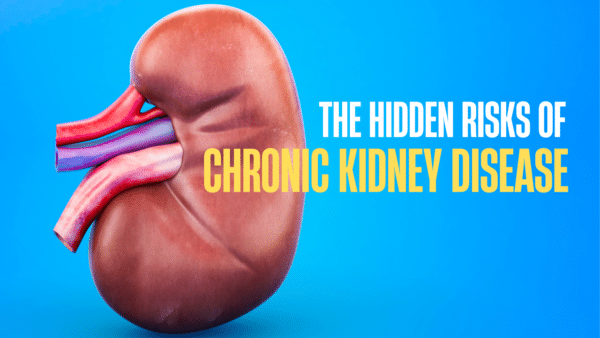The hemoglobin A1C is a blood test that measures the blood sugar attached to the hemoglobin, the protein in your blood cells that carry oxygen from the lungs to the rest of the organs and tissues.
This chemical linkage between hemoglobin and simple sugars is called glycation, and it’s normal within certain limits. But when a hemoglobin A1C test reveals high levels of glycated hemoglobin, that’s often an indicator of diabetes mellitus —or bad management of previously diagnosed diabetes.
When Is A1C Test Performed?
If your doctor recommends this test to you, it’s probably because they suspect that you are at risk of developing diabetes and wants to determine your average blood sugar levels in the last three months.
A1C test can’t go further than that because of the lifespan of the red blood cells that contain hemoglobin (which is roughly 120 days or four months). But it’s still an easy way for your doctor to have an overview of your overall glycemic control. That’s why it’s recommended to get an A1C test at least once a year for people with prediabetes, twice a year for people with type 2 diabetes, and 3-4 times a year for people with type 1 (insulin-dependent) diabetes.
After the results, your doctor can adapt the treatment to your needs to avoid complications. Then, they may want to repeat the A1C test within a certain period to evaluate your body’s response to the new treatment or medication plan.
The glycated hemoglobin is measured in percentages, and the A1C test results are listed as follows:
● Normal: Below 5.7%
● Prediabetes: 5.7% to 6.4%.
● Diabetes: Above 6.4% in two different A1C tests.
Can I Eat Before A Hemoglobin A1C Test?
Yes. The hemoglobin A1C test is a blood test that doesn’t require fasting. It’s more likely to be altered by pregnancy, anemia, high cholesterol levels, recent blood loss, recent blood transfusion, opioids and other medication, supplements, liver or kidney disease, etc.
However, what you choose to eat regularly can have an impact on your A1C test results. When you have prediabetes, you don’t want it to become diabetes, and when you have diabetes, you don’t want it to induce related health issues like cardiovascular, nerve, kidney, and eye disease. This is why it is important to keep your hemoglobin free of excess blood sugars as much as you can (less than 7% is a common goal for diabetic adults).
Your diet is a fundamental part of that. Not right before the A1C test, but always. After all, the A1C test is designed to measure long-term blood sugar levels, unlike other blood tests.
What To Eat To Lower Your A1C Levels
Before getting into the details of what to eat, it’s essential to know how to eat. Minding the diet also implies managing the portion sizes, as any excess food may turn into extra blood sugar.
To avoid overeating, it’s also important to respect particular mealtime schedules with more frequent, little meals instead of one large meal with big food intake all at once. And it’s wise to plan your meals (especially if you’ll be outside of your house) so that you won’t end up eating random meals with poor nutritional values, like fast food.
So, what should you eat to get better results in your next A1C test?
Natural Sugars
There are three types of carbohydrates, but mainly sugars and refined carbs (present in many processed foods) negatively affect your A1C levels. This is because they’re absorbed more efficiently, so they turn into glucose more quickly.
Natural sugars, like those found in fruits and vegetables, are much better, although you should keep an eye on the amount of sugar that each fruit or vegetable contains so you can eat them in the right portion.
Fruits with low sugar levels include:
● Lemon
● Kiwi
● Lime
● Grapes
● Berries
● Tomato
● Avocado
● Plum
● Tangerine
Some vegetables with low sugar levels are:
● Broccoli
● Cauliflower
● Kale
● Cucumber
● Lettuce
● Cabbage (including bok choy or Chinese white cabbage)
● Spinach
● Celery
● Brussels sprouts
Fiber
Dietary fiber is good for digestive health and reduces the risk of developing type 2 diabetes.
Whole fruits and vegetables contain fiber, but so do whole grains, nuts (like peanuts or walnuts), seeds, and legumes. It’s advisable to replace bread, white rice, and white flour with brown rice, wild rice, and whole-wheat flour. Then, add to the diet:
● Lentils
● Peas
● Beans
● Millet
● Cracked wheat
● Barley
● Whole oats
● Corn
● Quinoa
● Flax seeds
● Chia seeds
● Pumpkin seeds
Healthy Fats And Proteins
Healthy fats are monounsaturated and polyunsaturated fats. According to research, they can help avoid or manage type 2 diabetes. For example:
● Eggs
● Seafood like shellfish, salmon, sardine, tuna, herring, and mackerel
● Olive, canola, and peanut oil
● Soybeans
● Sunflower seeds
Proteins are also good for metabolic health:
● Tofu
● Greek yogurt
● Lean meats and poultry
● Cottage cheese
● Edamame
Limit or avoid the intake of red, processed, and organ meats; processed snacks, bakery products, and lactose (a sugar in mammalian’s milk that’s made of galactose and glucose; opt for almond milk, coconut milk, and other dairy-free products instead).
As you can see, mealtime is crucial to help your glycemic control, so you have to be prepared for it. Visit a registered dietitian for more information and diet plans based on your particular health status and tastes.
Other Tips To Lower Your A1C Levels
● Stay active. Resistance training and aerobic exercise improve your body’s insulin sensitivity. If you make a habit of physical activity, your A1C levels may significantly go down over time.
● Take your meds. There are several medications that your doctor can prescribe to you to help you control your blood sugar levels: miglitol, metformin, DPP-4 inhibitors, insulin (if you have type 1 diabetes), etc. These medications work hand in hand with a healthy diet and exercise (they do not replace them). But it’s important to take them according to your doctor’s plan to avoid blood sugar rises that may eventually reflect on your A1C test results.

